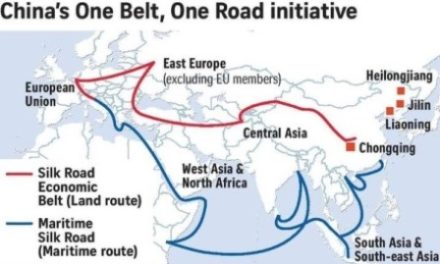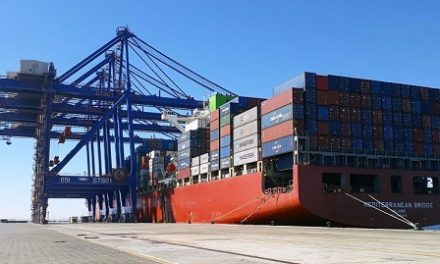
Namibia’s central bank governor talks maintaining economic stability

Ahead of Namibia’s new energy developments, Johannes !Gawaxab, Governor of the Bank of Namibia, outlined strategies to establish an effective fiscal regime, in an exclusive interview with Energy Capital & Power last September
ECP: What is the Bank’s operational scope and how does it support socioeconomic development in Namibia?
The Bank of Namibia’s most important role in promoting socioeconomic development is to maintain monetary and financial stability. In other words, its monetary policy seeks to balance price levels with income levels and encourage output levels that will increase employment in the long term. This means that inflation is kept low over both the medium and long term and that the financial system remains secure and steady.
High inflation destroys the purchasing power of the money in an individual’s pocket, leads to the misallocation of resources, and redistributes income towards the rich, who can better hedge themselves against inflation through, for instance, ownership of property and shares. High inflation also eventually leads to much higher interest rates once savers fully anticipate the inflation and demand an interest return high enough to compensate them for the erosion of the purchasing power of their savings. The Bank, therefore, combats inflation with its monetary policy, aided by the one-to-one exchange rate link between the Namibia Dollar and the South African Rand since the South African Reserve Bank also targets low inflation. This link makes it necessary for interest rates in Namibia to broadly follow those of South Africa, as significant interest differentials may trigger capital flows to South Africa.
However, the Bank of Namibia has a degree of freedom to set its policy rate somewhat higher or lower than South Africa, mindful of domestic economic conditions. As an example, Namibia’s policy interest rate is currently slightly lower than South Africa’s to support its domestic economy. However, it is set responsibly to maintain enough foreign reserves to meet international obligations without risking the exchange rate peg. A stable financial system, where people have confidence that their deposits are safe and that financial institutions are properly supervised, is equally necessary for socioeconomic development. Otherwise, confidence evaporates, uncertainty paralyzes the economy, and development is stunted. The Bank of Namibia, therefore, plays its part in ensuring a stable financial system in our country and is inter alia responsible for bank supervision and macroprudential oversight.
At the micro level, the Bank of Namibia provides seed capital to the Development Bank of Namibia (DBN) for funding small and medium-sized enterprises (SMEs) to support socioeconomic development. The Bank has also initiated the SME Economic Recovery Loan Scheme in conjunction with the Ministry of Finance and Public Enterprises for eligible SMEs to obtain working capital to revive their operations after the devastation of the COVID-19 pandemic. The Bank also provides advice and applied research capabilities to several government institutions, not least in the energy sector, to ensure Namibia optimizes the benefits from these burgeoning industries. Furthermore, the Bank continually develops its staff through appropriate training and exposure and provides scholarship opportunities to Namibians in relevant fields for our economic development.
ECP: How would you summarize the Bank’s most recent Financial Stability Report?
Overall, the financial system in Namibia remains sound, profitable, and with no disruptions, despite the economy performing below potential. Both household and corporate debt increased during the reporting period; however, risks to financial stability remained moderate. The banking sector, in particular, remained liquid, profitable, and well-capitalized, with capital levels well above the minimum prudential requirements. Despite the current inflationary pressures, the banking sector’s asset growth outpaced the prevailing inflation rate, which bodes well for financial stability.
Similarly, the non-bank financial institutions sector remained resilient despite the macroeconomic headwinds. The payment system and infrastructure remained stable, while efficiently contributing towards reliability in payments to facilitate financial stability in the country. Overall, risks to domestic financial stability remained stable; however, some risks are anticipated to increase on the back of uncertainty in the global macroeconomic environment, particularly global geopolitical tensions such as the war in Ukraine, slow recovery in China, and the impact of contractionary monetary policy to fight inflation, which appears to be more intractable than previously expected.
ECP: How can Namibia implement local content and ownership requirements, while maintaining an attractive environment for foreign investment?
Foreign direct investment is better secured and sustainable if it contributes to broad-based benefits to the local economy. Local content, where such investment makes use of locally available goods and services as well as skills, will ensure sustainability and mutual benefit between the country and the investors. Investors accept this fact, and the balance needed is in terms of flexibility when goods services, or skills are not locally available. If so, businesses should be able to acquire such goods and services or skills with ease from elsewhere.
Local content must come at a competitive price and with competitive quality and reliability. Otherwise, the investments will just go elsewhere in the world. In general, our regulatory and business environment should be friendly to all investors, whether local or foreign. After all, they have to take the risk that goes with investment. However, everybody should also pay their fair share of tax, so it is sensible to have uniform tax rates across local and foreign-owned firms. Thus, as a country, Namibia should facilitate that where capacity does not exist, it is created over time, in terms of increasing capacity for local content, skills, and competitiveness. To stay competitive in emerging industries, it is essential to strike a balance between regulating and promoting local content. This requires designing a policy that supports fairness, accessibility, and growth for local businesses. That would be a sustainable solution, especially in high unemployment environments such as Namibia.
ECP: How should Namibia position itself within global decarbonization efforts and a shift away from fossil fuel lending?
The shift from fossil fuels to renewables is gradually taking place. However, it is reasonable to also continue investing in fossil fuel development, as consumer preferences, the stock of transport equipment, and the energy infrastructure cannot be changed overnight. At the same time, investment in carbon-saving areas such as green hydrogen is the way to go for the long haul. Namibia is seeing action in both areas. Like many countries on the continent, Namibia is confronted by an energy deficit, which for the short and medium term, can only be met through a mixture of carbon fuels and green sources. In the domestic financial sector, we have observed some activities, with the local banks soliciting funds through green bonds aimed at being disbursed for renewable energy projects such as solar PV and wind farms.
The energy sector is important for the Namibian economy and ensuring energy security is of paramount importance. The Bank acknowledges this importance, and in line with the discoveries that were announced last year, the Bank themed its 2022 Annual Symposium, “Maximizing economic growth from renewable and non-renewable energy sources in Namibia.” The symposium brought together key role players in the sector and the key recommendations from the symposium reflected the importance of building accountable and transparent resource governance institutions to avoid the resource curse, ensuring an effective fiscal regime in the extraction industry, and providing a clear and stable local content regulatory framework.
ECP: How competitive is Namibia’s financial market?
Currently, the real effective exchange rate of the Namibia Dollar is undervalued by historical standards. Therefore, production in Namibia is more competitive in international markets than before. The great road system, recent improvements to and expansion of the Port of Walvis Bay, sound macroeconomic policies, and due attention to the environment that Namibia is known for contribute to competitiveness. We are excited by the oil and gas developments, and also by green hydrogen, the expansion of solar power capacity, and developments around lithium and other materials that are helpful in the transition to low-carbon energy. We remain broadly aligned with and committed to Vision 2030.
As for the future of domestic financing, our government is committed to living within its means and managing its deficit so that it can be readily financed, with the lion’s share financed in the domestic financial market. The COVID-induced large deficits of 2020/21 and 2021/22 have made way for much smaller ones, with further deficit reduction in the coming years. Fiscal sustainability is a high priority of the Government. The private sector’s financing needs will continue to be met by a combination of domestic and foreign sources. Foreign direct investment will be prominent in the oil, gas, and green hydrogen initiatives. We believe our ready access to the South African capital market is a strong point and an important benefit of our membership in the Common Monetary Area.
This interview is featured in Energy Invest: Namibia 2023, the official investment report for the country’s energy and mineral resource sectors. The publication will be rereleased at the upcoming Namibia International Energy Conference in Windhoek on April 23-25, 2024. To download a full copy of the report, click here (https://apo-opa.co/3SuujjX).













































